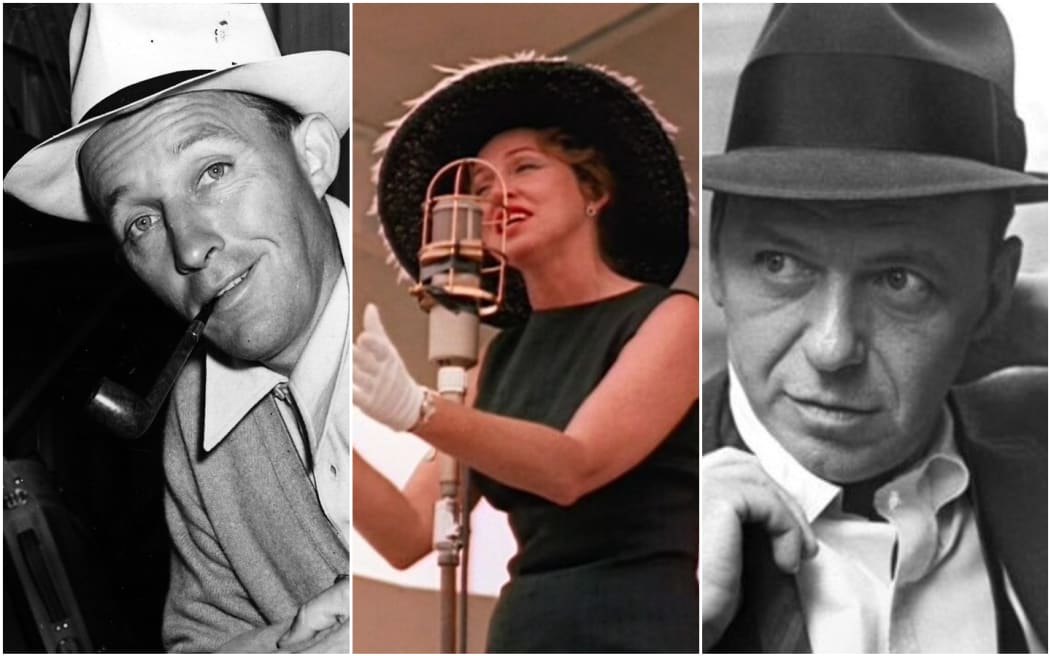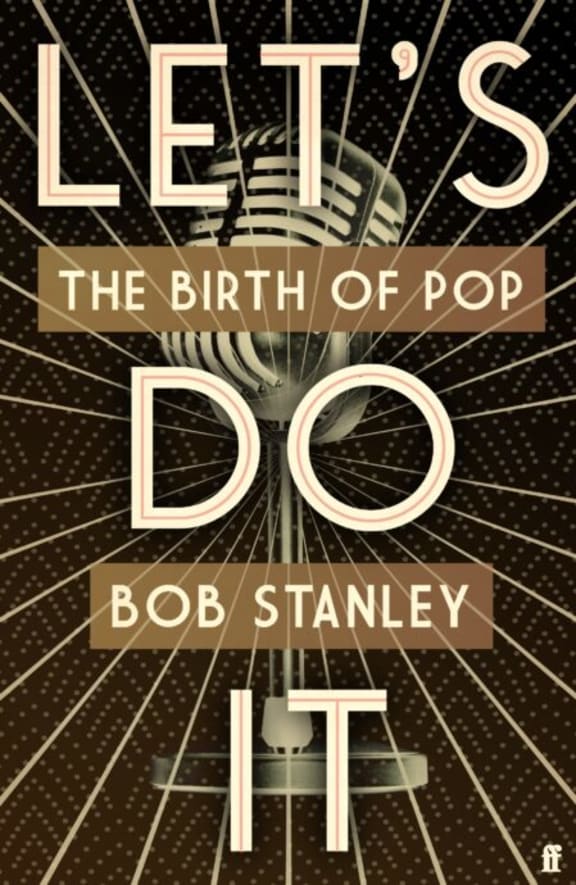What do you do after you've undertaken the seemingly insane task of writing a book about the entire history of Pop music, as musician and writer Bob Stanley did in 2013's Yeah Yeah Yeah? You write the prequel.
In his new book, Let's Do It: The Birth of Pop, Stanley, who is a member of English indie/dance crossover band Saint Etienne, tells the definitive story of the birth of Pop music, from 1900 through to the 1950s - a period that is usually overlooked or forgotten in the tale of the genre's evolution.

Photo: Wikicommons
It became apparent to him that black music underpinned almost all popular music, he told Jim Mora.
“Every time I found out about a white artist, normally a man, who was seen to invent some new form, taking music in a new direction, I had to be really conscious that almost always there's going to be some black [artist] origin to this.
“And there almost always was; barbershop I didn't really know the origins of that. And I had to dig around quite a lot to find that, it's not that widely known, but barbershop music was basically originally in black barbershops because black men in the south had nowhere else apart from church where they could go and sing. And the origins of barbershops have nothing to do as with men in stripy blazers and bow ties or whatever.”
Perhaps the first true pop star was Frank Sinatra, he says.
“He was the first one who caused the kind of almost rioting and screaming at his shows to his persona, the very skinny guy on stage, looking like he needed to be mothered, women wanted to take care of him in some way or other. That was kind of brand new.”
Soft-voiced crooner Bing Crosby was the first to see the power of tape recording, he says.
“Tape recording had been something that the Germans had been working on in the Second World War originally, so they could pretend Hitler was in every town in Germany, broadcast his voice over loudspeakers or whatever.
“But when the Americans brought home the spoils of war, they brought back this tape recorder in pieces. And no one really knew what to do with it.
“Bing Crosby somehow heard about this and said, well, I'll give you thousands of dollars to make this thing work and make it viable, because then I'll be able to not have to broadcast live to the west coast and live to the east coast. I can make a recording of it and go and play golf.”
Trail-blazing women also feature in Stanley’s book. The Boswell Sisters, now largely forgotten, were famous for their close harmonies, he says.
“They were three sisters from New Orleans from a fairly wealthy background.
"But growing up in New Orleans, they soaked up all the music that was around them and hung around with jazz musicians and the vocals are incredible.

Photo: Faber
“The Andrews Sisters always said that they model themselves on the Boswells and I think the Boswell sisters would be better known but like pretty much all the women in this book, with a few exceptions, they just stop their careers when they get married.
“And that's what happened with the Boswell Sisters, two of them got married.”
Anita O’Day was another pioneer who forged her own path, he says.
“She's terrific, she sang with the Stan Kenton band who were probably the biggest post-war big band.
“I think she spent time in prison for drug offences, she got quite a reputation, and yeah wasn't gonna be told what to do by anybody, she's fantastic.”
The musicals produced many pop standards, but Stanley isn’t so keen on them when they get serious, preferring Rodgers and Hart to Oscar Hammerstein and Stephen Sondheim.
“They just made the made musicals, a very serious business.
“Whereas prior to that, you look at Rodgers and Hart musicals from the ‘30s The Pyjama Game, Calamity Jane, these are the kind of musical as I like, personally, I suppose, they're just a romp, they're fun. The tunes are great.
“You don't need this heavy message … pretty much all Rodgers and Hammerstein musicals have a quite heavy handed political message and social message and I find it just quite wearing. But you know that is just me. Rodgers and Hammerstein are the most successful musical writers in history, so what do I know?”
On the other side of the Atlantic and a few decades later, Tim Rice and Andrew Lloyd Webber peaked early, he says.
“It's great [Jesus Christ Superstar] I really like that, and I grew up with it and Joseph [And his Amazing Technicolour Dreamcoat], we did Joseph at school I remember.
“I think they just kind of peaked early, suddenly it’s like Starlight Express. Who can remember a song from Starlight Express?”
Stanley has his own take on some pop music sacred cows – he doesn’t believe history has been kind to big band leader Glen Miller for example.
“I can read jazz books and he never really gets a mention, I can read even books on swing and he's kind of side lined compared to Artie Shaw or Benny Goodman.
“I think it's like there's an element of like snobbery about what he did because he was so hugely successful but I think he's not regarded as a jazz musician, his band aren't regarded as jazz, because there are very few solos, but he took the big band sound and put riffs onto it.”
'In the Mood' has an almost riffy, R'n'B feel, he says.
“Imagine that riff being played on a bass, it's gonna sound great. It's gonna get everybody dancing.
“He doesn't really look like the future of anything particularly as he's like bespectacled, he's quite square, but he really knew what he was doing.
“And he was hugely successful, and the records still sound great. There's a reason why his name's remembered. Because 'Moonlight Serenade' and 'Little Brown Jug' aren't gonna go anywhere. They're around forever, they're great records.”
Unfancied 1970s glam band Sweet are comparable to their heavier somewhat cooler peers Led Zeppelin, he says.
“I think they were certainly underrated at the time. I think people love Sweet now and think those records are terrific 'Ballroom Blitz' and 'Blockbuster'.
“And they were an amazing live group if you look on YouTube but at the time, there were absolutely dismissed as bubblegum and music for 12-year olds, and really inane.
“Led Zeppelin obviously were not getting that, they're getting praised to the skies and had a string of number one albums, but 'Black Dog' and 'Hellraiser', I think, are pretty much on a par, both great records.”
He also has views on the single versus the album, he told Jim Mora.
“A three-minute record, trying to condense all your ideas and all the excitement you can get to one song on one side of a seven-inch single is a real skill.
“I'm a big admirer of people who honed their craft, like the Brill Building in New York or Denmark Street in London, and just like worked away at songs … keep working at it, rather than people jamming for 20 minutes. That doesn't interest me at all.”

